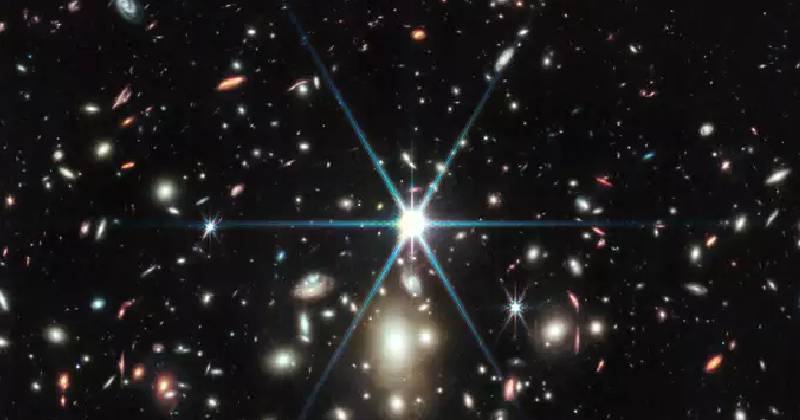NASA's James Webb Space Telescope has unveiled a fresh image that brings forth the hues of Earendel, the most remote star ever detected.
Hubble Space Telescope initially spotted Earendel in the previous year. This star is more than twice as scorching as the sun and shines "approximately a million times more brilliantly," as indicated by NASA in a recent press release.
Contrary to its depiction as a prominent point with blue diffraction spikes in the center of the image, Earendel manifests as a reddish speck within the Sunrise Arc galaxy. The galaxy exhibits a lengthy, curved, crimson trail located beneath the diffraction spike situated at the 5 o'clock position.

Earendel's distance is so immense that its light has traversed billions of years to finally reach Earth. Consequently, the image captured by Webb displays the star as it appeared approximately 1 billion years following the occurrence of the Big Bang, dating back around 12.9 billion years ago.
Given the ongoing expansion of the universe since that time, Earendel now stands roughly 28 billion light-years apart from Earth, as reported by Space.com.
The universe's expansion has extended a significant portion of Earendel's light to wavelengths that fall beyond Hubble's instrument detection capabilities. However, with Webb's remarkable power, being 100 times more potent than Hubble, it managed to capture previously undiscovered hues emitted by the distant star.
These newfound colors unveil that despite being the most distant star ever detected, Earendel isn't alone; scientists posit that it is accompanied by a neighboring star.
Typically, stars as substantial as Earendel have companion stars, but Hubble was unable to identify one for Earendel. Thanks to the impressive infrared vision of the Webb Telescope, researchers believe they have glimpsed a "cooler, redder companion star" beside Earendel for the first time.
Webb's exceptional observational capabilities also uncovered novel star clusters and regions where new stars are forming within the Sunrise Arc.
Prior to Earendel's discovery, the farthest star observed had emerged 4 billion years post the Big Bang, and this preceding record was also detected by Hubble. In Earendel's case, the gravitational influence of a massive galaxy cluster magnifies our perspective of the star. NASA expresses that, in the future, researchers aspire to peer so deeply into the cosmos that they can discern a star from the very first generation of stars in the universe. These stars played a pivotal role in generating heavier elements from hydrogen and helium, which eventually led to the creation of planets and the emergence of life on Earth.